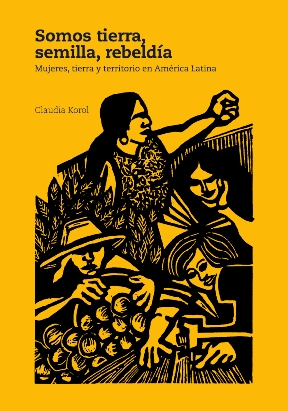Women, land and territory
Keywords:
women, land, territory, agrarian questionAbstract
In this article we present a review of the book "We are land, seed, rebellion, women, land and territory in Latin America" by Claudia Korol. In this work, the author analyzes the inequalities faced by rural women in Latin America to access land tenure and use. His presentation presents an important synthesis of different views on territory, land ownership, patriarchy and colonialism, whose common objective is to make visible the place of women in rural and agrarian areas. Claudia Korol interpellates the Eurocentric and Western perspectives that some gender studies go through, at the same time that she dialogues with community feminisms, indigenous feminisms, black feminisms and eco-feminism. Discussing women's access to the land, is for the author, not only a debate in terms of economy, but in terms of politics and culture, of imagining and fighting for a life alternative, more just not only with women but also with nature.Downloads
References
Azcuy Ameghino, E. (2016.) “La cuestión agraria en Argentina Caracterización, problemas y propuestas”. En Revista Interdisciplinaria de Estudios Agrarios Nº 45, 2do. Semestre de 2016, Recuperado de https://bit.ly/2A1GlZe
Bartra, A. (2010). “Campesindios. Aproximaciones a los campesinos de un continente colonizado”. En Revista Memoria. Buenos Aires, Diario La Nación. Recuperado de https://bit.ly/2BkDZ7M.
Korol, C. (2016). “Somos tierra, semilla, rebeldía. Mujeres, tierra y territorio” en América Latina Coedición de GRAIN, Acción por la Biodiversidad y América Libre. Recuperado de https://www.grain.org/es/article/entries/5563-somos-tierra-semilla-rebeldia-mujeres-tierra-y-territorios-en-america-latina.

Downloads
Additional Files
Published
Issue
Section
License
Authors who have publications with this journal agree to the following terms:
a. Authors will retain their copyright and grant the journal the right of first publication of their work, which will simultaneously be subject to the Creative Commons Attribution License that allows third parties to share the work as long as its author and first publication in this journal are indicated.
b. Authors may adopt other non-exclusive license agreements for distribution of the published version of the work (e.g., deposit it in an institutional telematic archive or publish it in a monographic volume) as long as the initial publication in this journal is indicated.
c. Authors are allowed and encouraged to disseminate their work through the Internet (e.g., in institutional telematic archives or on their web page) after the publication process, which may produce interesting exchanges and increase citations of the published work (see The effect of open access).

